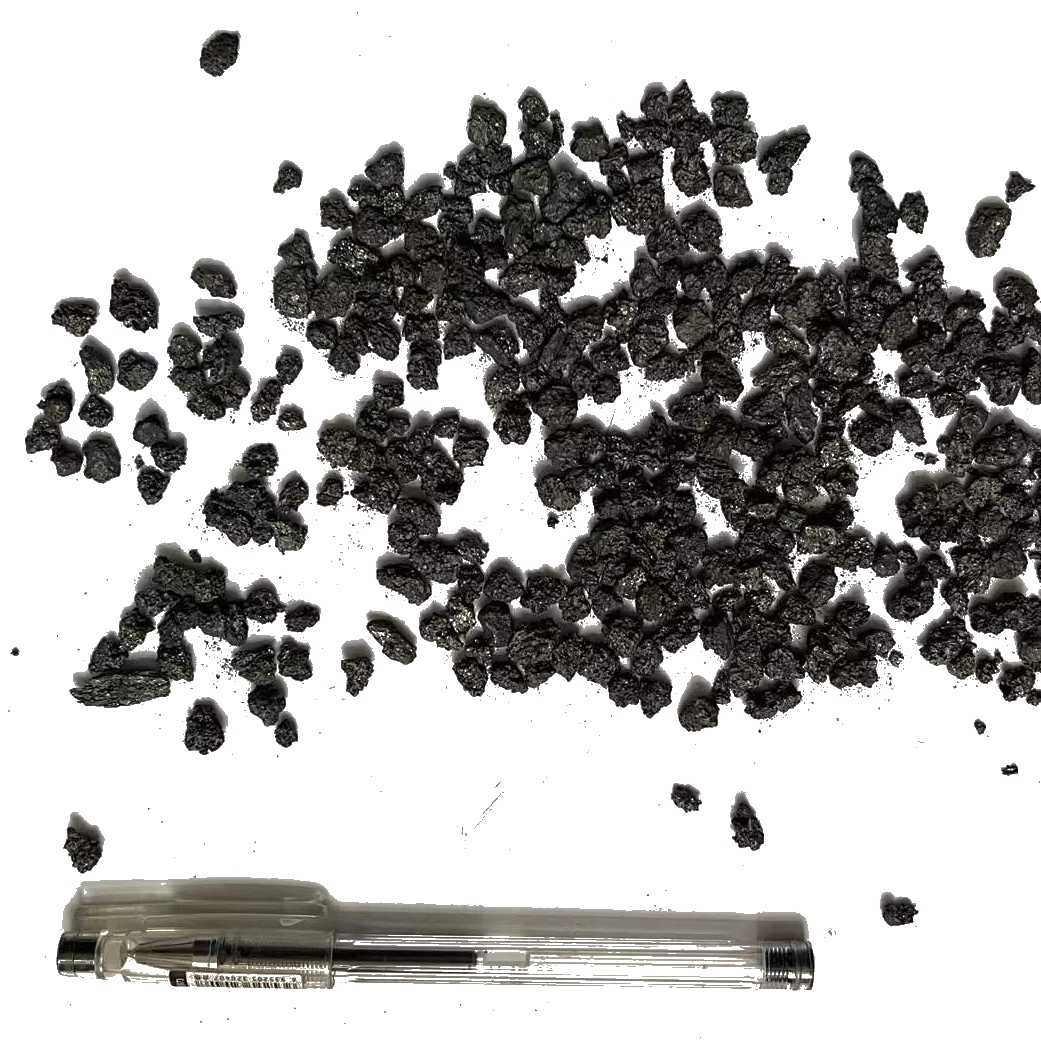Carburizing agent, is used in steel and casting industry, for carburizing, desulfurization and other auxiliary materials. The most widely used in iron and steel smelting industry is to make up for the carbon content burned in the process of iron and steel melting and the addition of carbon-containing substances.
In the smelting process of iron and steel products, often because of smelting time, holding time, overheating time and other factors, the melting loss of carbon elements in liquid iron increases, resulting in a decrease in the carbon content of liquid iron, resulting in the carbon content of liquid iron can not reach the expected theoretical value of refining. Therefore, it is necessary to add carburizing products to adjust the carbon content of steel, which is an essential auxiliary additive for the production of high-quality steel.
Carburizing agent according to the production of raw materials can be divided into: wood carbon, coal carbon, coke carbon, graphite.
1. Wood carbon
2. Coal type carbon
* General calcining coal carburizer: It is a product of low ash and low sulfur fine washing anthracite in calcination furnace after about 1250℃ high temperature calcination, mainly produced in Ningxia, Inner Mongolia. The general carbon content is 90-93%. It is mainly used in steel making enterprises, and some casting enterprises are used in gray cast iron. Due to the compact structure of its carbon molecules, the heat absorption process is slow and the time is long.
* Asphalt coking carburizer: a by-product of coal tar hydrogenation to produce oil. It is a high carbon, low sulfur and low nitrogen carburizer extracted from tar. The carbon content is between 96-99.5%, the volatile content is low, the structure is dense, the mechanical strength and wear resistance of the particles are relatively high, easy graphitization.
* Metallurgical coke carburizing agent: coking coal firing, is usually cupola with large coke, in addition to smelting, but also used for metal charge carburizing.
3. Coke (petroleum coke) carbon
* Calcined coke carburizer: It is a product made of low-sulfur petroleum coke as raw material, which is processed in a calcination furnace at 1300-1500 degrees after removing moisture, volatiles and impurities. Its fixed carbon content is generally stable at about 98.5%, and its sulfur content is mostly less than 0.5% or 1%. Its density is compact, not easy to decompose, and its use time is medium. Production is mainly concentrated in Shandong, Liaoning, Tianjin. Because of its price and supply in many categories of carburizing agent has an advantage, the market is more widely used.
* Graphitic petroleum coke carburizing agent: petroleum coke in graphitic smelting furnace after 3000 degrees of high temperature production of graphitic products, with fast absorption, high carbon and low sulfur advantages. Its carbon content is 98-99%, sulfur content index is lower than 0.05% or 0.03%, producing areas are concentrated in Inner Mongolia, Jiangsu, Sichuan and so on. Another way comes from the graphite electrode cutting waste, because the graphite electrode itself after graphitization treatment, the waste can also be used as a carburizing agent for steel mills.
* Semi-graphitic petroleum coke carburizer: graphitic temperature is not as high as graphitic carburizer, carbon content is generally greater than 99.5, sulfur content is higher than graphitic carburizer, below 0.3%.
4. Graphite type
* Earth-like graphite carburizing agent: is the application of earth-like graphite in iron and steel smelting or casting carburizing, its main producing area in Hunan, is the direct application of earth-like graphite powder, usually carbon content in 75-80%, can be purified to increase the product carbon content.
* Natural graphite carburizing agent: mainly to flake graphite, carbon content in 65-99%, low stability, generally used in steel mills.
* Composite carburizing agent: graphite powder, coke powder, petroleum coke and other foot materials, adding different binders with the machine can be pressed into shape, for the rod granular. The carbon content is generally between 93 and 97%, and the sulfur content is extremely unstable, generally between 0.09 and 0.7.
Post time: Nov-17-2022

